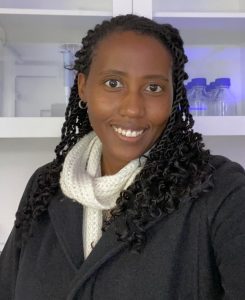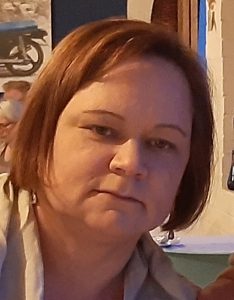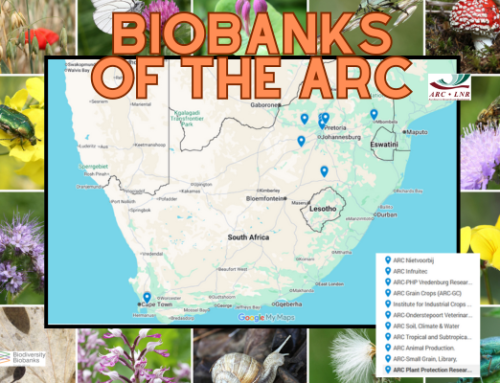Women of the BBSA: The Backbone of Biodiversity Biobanking
On 9 August 1956, four brave women – Helen Joseph, Rahima Moosa, Sophie Williams and Lilian Ngoyi – led over 20 000 women of all races and ages from every corner of South Africa in a march towards the Union Buildings in Pretoria, to present a petition against the carrying of passbooks by black women to prime minister JG Strijdom’s office.
The march was organised by the Federation of South African Women, which famously challenged the idea that ‘a woman’s place is in the kitchen’, declaring instead that ‘a woman’s place is everywhere’.
One of those places? The lab (or field, or research complex).

Professor Michelle Hamer
Project Lead: Biodiversity Biobanks South Africa
“For far too many years, women were marginalised from the scientific conversation – women were not encouraged to study science, they struggled to get appointed in professional positions and they were paid less than men in the same position,” says Professor Michelle Hamer, Project Lead of the Biodiversity Biobanks South Africa (BBSA). “In South Africa, that was definitely the case. But today, at last, women in science are getting their due.”
This is especially true in biodiversity biobanking in South Africa. The BBSA provides a coordinating structure across several of South Africa’s existing biodiversity biobanks, on university campuses, in dedicated research facilities and even at national parks, staffed by women who are biotechnologists, veterinary scientists or technologists, microbiologists, crop scientists or botanists (and more).
So today, as South Africa celebrates National Women’s Day, we celebrate just a few of the many amazing women of the BBSA.
Women like…
Leana Rossouw Freese: A Walk On The Wild Side

Leana Freese is the Veterinary Technologist at one of the wildest biobanks in the BBSA – the SANParks Veterinary Wildlife Services Biobank in the Kruger National Park.
Leana Rossouw Freese developed an interest in animals early on. Sonaturally, she went on to study Veterinary Technology…which comes in handy now she’s a Veterinary Technologist at the SANParks Veterinary Wildlife Services (VWS) Biobank in Skukuza in the Kruger National Park – the wildest biobank in Africa. So any given day could find Leana up to her neck in emails and admin, or up to her arm in a rhino’s rear end, or up to her wits’ end making sure the biobank collections are properly cared for.
“I recently read an article where Oliver Ryder from the Frozen Zoo, in San Diego Zoo said ‘You have to collect things for reasons you don’t yet understand.’ And that is exactly it,” she says. “A biobank can be a solution for endangered species, and it can be used to answer many research questions related to understanding diseases, genetics, environmental impacts, and animal physiology. We won’t know until we use it – and in the meantime, we need to collect and manage it, so we can find out what it’s really for one day.”
Want to know more about Leana’s life amongst the lions? Find out here.
Mpho Mohlakoana: The Powerful Potential Of Plants

Mpho Mohlakoana’s passion for plants and pharmacology has brought her to the SANBI Indigenous Plant DNA Biobank
SANBI’s Indigenous Plant DNA Biobank has a lot on its plate. As the name implies, the biobank focuses mainly on South Africa’s indigenous plants – of which there are over 22 000, many of them endemic, and many of them not very well understood. Luckily, botanist – and plant enthusiast – Mpho Mohlakoana is here to help. With an MSc in Botany and Biochemistry from the University of Johannesburg (with a Specialization in Ethnobotany and phytochemistry), Mpho has a passionate belief in the power of plants.
My passion for botany came more from my dad. He used to give us herbs when we were sick – and I became really interested in what different plants can do, and the many different properties of plants. There’s so much you can discover by studying plants, whether it be DNA, or the type of chemicals in the plant, what family it belongs to, what a plant can do for humans. There’s so much to discover – and that really interests me.”
Want to know what Mpho thinks about biobanking, life and everything? Find out here.
Riana Jacobs Venter: Fun With Fungi

Dr Adriaana Jacobs, Curator of the National Collection of Fungi and Senior Researcher at the ARC’s Plant Protection Research Institute
Fungi aren’t quite as famous as plants or animals. But they’re every bit as important – and every bit as interesting. Just ask Dr Adriaana (Riana) Jacobs, who’s had a passion for exploring fantastic fungi ever since her grandfather gave her her first microscope as a teen – a passion that earned her a PhD from the University of Pretoria and brought her to the National Collection of Fungi (NCF), where she leads a team duplicating and incorporating fungal collections from the Agricultural Research Council (ARC), identifies and studies new strains, and helps combat invasive fungi (and stop them from affecting our food supply).
“Fungi are my favourite living things,” she says. “Why? Because of their beauty and adaptability, and their amazing diversity. There’s just so much we can learn about – and from – them. Working at the NCF means contributing to a sector that impacts so many people’s lives directly or indirectly. Food security, conservation, medicines, biotechnology – all these depend on an understanding of our biodiversity. And did I mention I just love working with fungi?”
Want to know more about what makes fungi fun? Let Riana tell you here.
So…did we miss anyone? Of course we did! Are there more women in science we should be celebrating? Of course there are! The BBSA is filled with hardworking women at the cutting edge of their field. Women who work with fungi, or plants, or bacteria, or rhinos (or sheep, for that matter).
So if there’s anyone you think should be on our list, just Contact Us – or engage with us on Facebook @BioBankSA, on Twitter @BioBankSA, or on LinkedIn: Biodiversity Biobanks South Africa.
And if you’d like to learn more about the legendary women who made biobanking possible – check out Women of Biobanking: Science Heroines Who Changed The World.

What are biodiversity biobanks?
Biodiversity biobanks are repositories of biologically relevant resources, including reproductive tissues such as seeds, eggs and sperm, other tissues including blood, DNA extracts, microbial cultures (active and dormant), and environmental samples containing biological communities….






